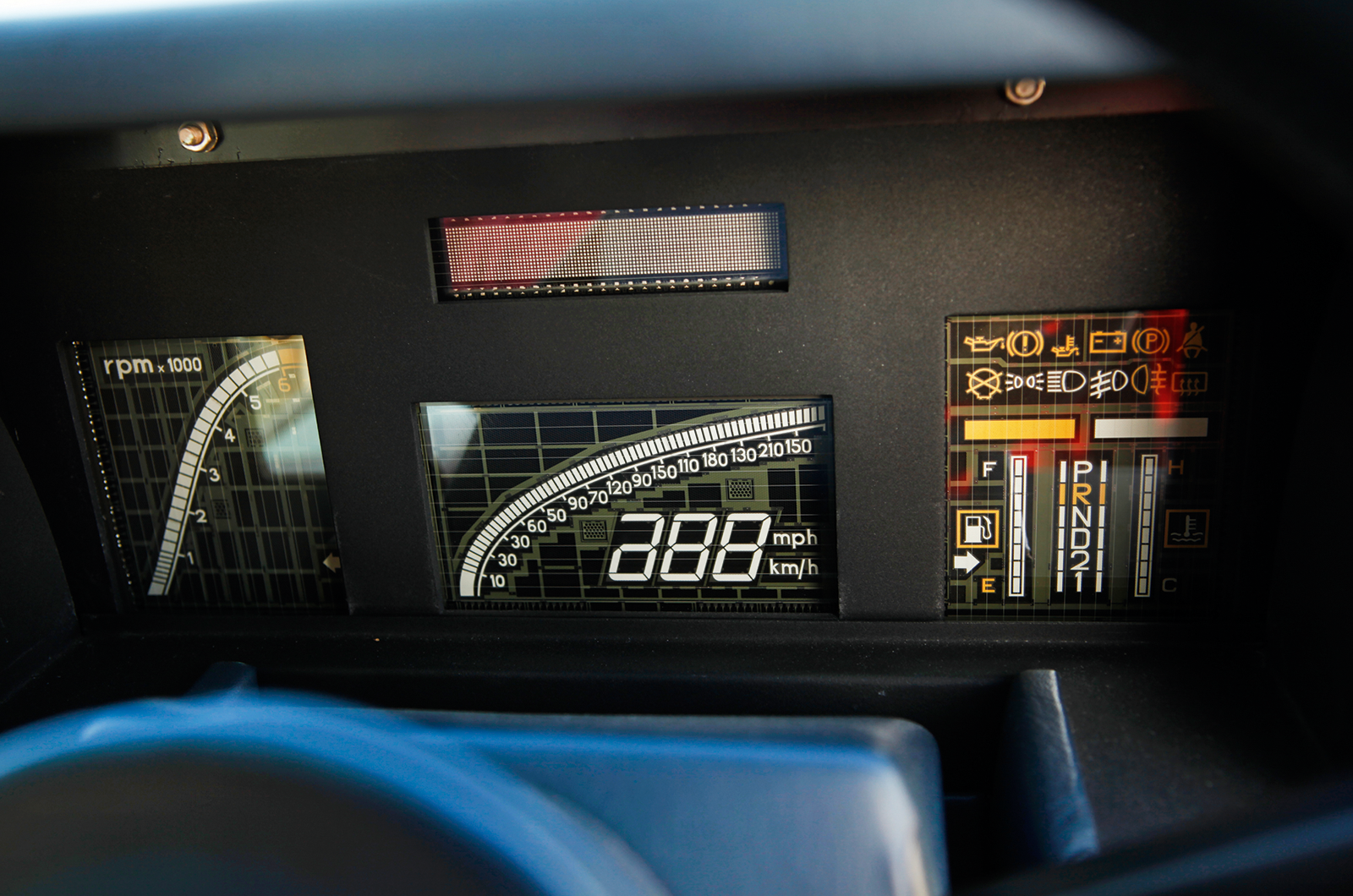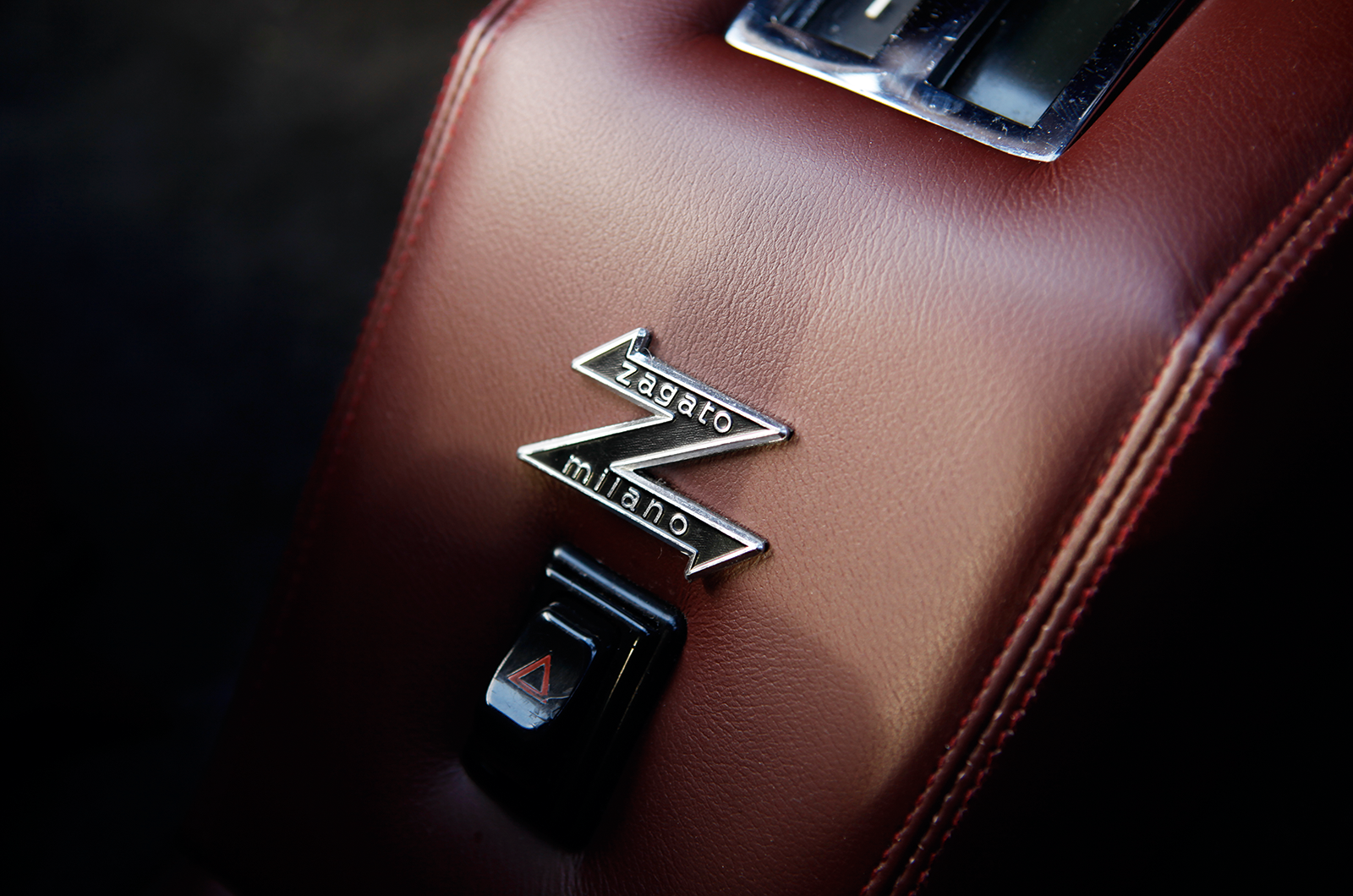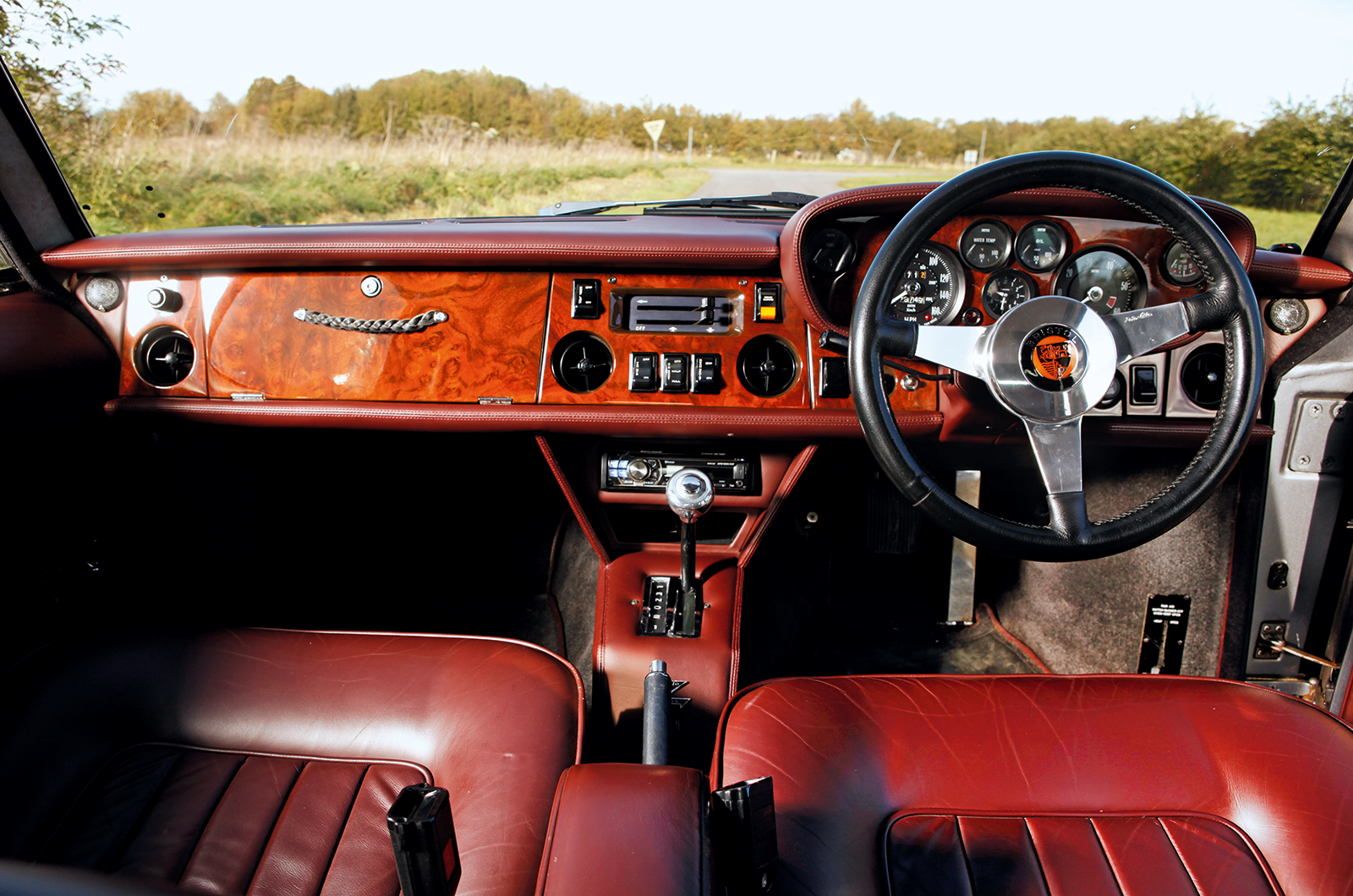As always, the superbly located live axle remains horizontally steadfast yet vertically supple.
The Spencer Lane-Jones brakes are mighty, body control is good and the vocals from the Canadian V8 fabulous.
The steering box is excellent for its type – predictable, secure and nicely weighted – but there is, alas, a void around the dead-ahead where feel bunks off early.
The Bristol 412’s roof blends a detachable panel with a rear soft-top
In terms of steering, the Rolls-Royce scores over the 412 – it is marginally lighter, more linear and just as predictable – and the Camargue keeps the Bristol pinned to the ropes with its combination of interior decadence and effortless whitewalled waftability.
The lush carpet, the yardage of timber faced with a mass of switches, controls and dials, plus the torque of the whispering 6.75-litre giant, make the Camargue immensely relaxing to drive.
Just guide the column gear selector into ‘D’, twirl the sports wheel and you’re off – being cosseted and thoroughly spoilt in this velour-trimmed womb.
This 412 was restored by Bristol in the ’00s
Push it too hard and it will roll like the Queen Elizabeth but then, hurtling around on the bump-stops with moaning tyres isn’t really the point.
Talking of points, the Lagonda has the only interior that lives up to the promises made by its bodywork.
No sooner have buttocks docked than you’re confronted by less of a fascia and more of a high altar dedicated to the digital gods.
It’s hardly surprising that Barry Gray’s theme for Space: 1999 is playing in my head.
The luxurious interior means that long journeys are not a chore in the Bristol 412
The Lagonda is the most dynamically competent of the three in terms of steering feel, response and strictly governed body roll – its cornering poise does encourage spirited driving.
Its ‘small’ 5.3-litre V8 may not have the instantaneous surge of the others, but the rest of its arsenal is as athletic as you’d expect.
At what engine speed does the shove really come? I couldn’t honestly tell you, my analogue brain failed to interpret the green LED light show and remained clueless as to the function of all those buttons.
Although, for some reason, I now have an insatiable urge for a game of Pong...
Smart detail touches abound in this classic Bristol’s cabin
To drive, each is as individual as their styling, and none need to make any excuses: the Camargue is as relaxing as having a hot bath, the Lagonda is keener and the enthusiastic driver’s choice, while the Bristol is a merry halfway house with all the joys of a tourer.
Perhaps, though, the Camargue was the most surprising, because I was expecting a vague, wandering behemoth and it was anything but.
I’d have to opt for the 412, however.
Built in the city of non-conformity, to me it’s the bravest and the least willing to kowtow to the mainstream.
Later Bristol 412s gained a more watertight roof
It is also the car which, given that I have yet to completely digest its design, still challenges my tastes and preconceptions.
Every now and then, I’ll admit, it does resemble a tent pitched on a giant cheese sandwich.
These classic cars may not seduce you immediately, but they are eccentrically different – more David Hockney than William Turner, more Syd Barrett than Paul McCartney.
They offer pure, single-minded drama that has never been diluted by a customer clinic.
A splash of lemon in the mix, a touch of sour to give a complementing contrast to the full-fat curves of accepted populist beauty.
Somehow, I don’t think that we’ll see their like again.
Images: Tony Baker
Thanks to: Paul Wilson, Mark Griffiths, David Willoughby and Stefan Cembrowicz; the Bristol Owners’ & Drivers’ Association; the Rolls-Royce Enthusiasts’ Club; and the Lagonda Club
This was first in our March 2013 magazine; all information was correct at the date of original publication
Factfiles
Aston Martin Lagonda V8
- Sold/number built 1977-’90/645
- Construction steel substructure, alloy body
- Engine all-alloy, dohc-per-bank 5340cc V8, fuel injection
- Max power 309bhp @ 5500rpm
- Max torque 320lb ft @ 4000rpm
- Transmission three-speed auto, RWD
- Suspension independent, at front by wishbones, anti-roll bar rear de Dion, coil springs, self-levelling, Watt linkage; telescopics f/r
- Steering variable power-assistance rack and pinion
- Brakes ventilated discs with servo
- Length 17ft 4in (5283mm)
- Width 5ft 10½in (1791mm)
- Height 4ft 3in (1295mm)
- Wheelbase 9ft 7in (2921mm)
- Weight 4460lb (2023kg)
- 0-60mph 8.8 secs
- Top speed 143mph
- Mpg 11
- Price new £33,000 (1978)
Bristol 412
- Sold/number built 1975-’82/61
- Construction steel chassis; steel/alloy body
- Engine all-iron, ohv 5899cc V8, single four-choke carb
- Max power n/a
- Max torque n/a
- Transmission three-speed auto, RWD
- Suspension: front independent, double wishbones, coil springs, adjustable dampers, anti-roll bar rear live axle, torsion bars with self-levelling, adjustable dampers, Watt linkage
- Steering power-assisted recirculating ball
- Brakes discs, with servo
- Length 16ft 2½in (4940mm)
- Width 16ft 2½in (4940mm)
- Height 4ft 9in (1443mm)
- Wheelbase 9ft 6in (2896mm)
- Weight 4229lb (1922kg)
- 0-60mph 7.4 secs
- Top speed 140mph
- Mpg 13
- Price new £14,584 (1975)
Rolls-Royce Camargue
- Sold/number built 1975-’86/529
- Construction steel monocoque, aluminium bonnet, doors and bootlid
- Engine all-alloy, ohv 6750cc V8, four-choke Solex carb
- Max power n/a
- Max torque n/a
- Transmission three-speed auto, RWD
- Suspension independent, at front by wishbones rear semi-trailing arms, coil springs, self-levelling; telescopic dampers, anti-roll bar f/r
- Steering power-assisted worm and roller (rack and pinion from 1977)
- Brakes powered discs
- Length 16ft 11½in (5160mm)
- Width 6ft 3½in (1900mm)
- Height 4ft 9in (1400mm)
- Wheelbase 10ft (3050mm)
- Weight 5175lb (2347kg)
- 0-60mph 11.5 secs
- Top speed 120mph
- Mpg 12
- Price new £29,250 (1975)
Enjoy more of the world’s best classic car content every month when you subscribe to C&SC – get our latest deals here
READ MORE
Alfa Romeo 2000 Sprint vs Bristol 406: the connoisseur’s choice
Rolls-Royce Silver Shadow II vs Cadillac Seville vs Jaguar XJ12 LWB: game of thrones
From the past with presence: Bristol 405 vs Lagonda 3 Litre
Simon Charlesworth
Simon Charlesworth is a contributor to Classic & Sports Car



























